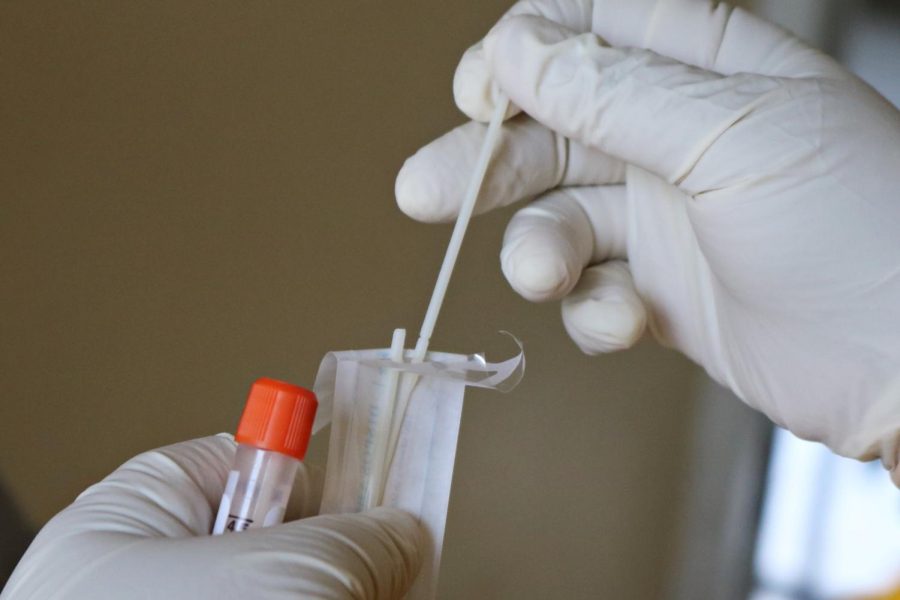Monkeypox: an update on the 2022 global outbreak
Photo courtesy of Unsplash/Musid Majnun
A doctor removes a testing swab, Sept. 7, 2020
Since the beginning of May 2022, reports of monkeypox cases have risen across multiple continents. The World Health Organization declared the outbreak a public health emergency of international concern, with the White House releasing a similar declaration. While this is not the first time monkeypox cases have been reported globally, it is the first time that the virus has become a serious public health threat in the United States.
Monkeypox was first discovered in 1958 after the occurrence of a pox-like disease outbreak within two colonies of monkeys that were being used for research. While the virus is named “Monkeypox,” there is currently no known source of the virus; however, it is believed that African rodents and non-human primates, monkeys included, can possibly carry the disease.
The first human case of monkeypox was recorded in 1970. Prior to the current 2022 outbreak, Monkeypox had been reported in multiple central and western African countries. All reported cases have been linked to countries where the disease commonly occurs or through imported animals.
According to the Center for Disease Control, as of Sept. 8, there have been 21,504 cases within the United States and 56,609 cases reported globally. In Connecticut alone, there have been 107 reported cases.
Monkeypox is a rare viral zoonosis, a virus that is transmitted to humans by animals, with similar, although clinically less severe, symptoms seen in Smallpox patients. The virus is transmitted to humans through close contact with an infected person or animal, or with material that is contaminated. Through human-to-human contact, Monkeypox can be spread by “close contact with lesions, body fluids, respiratory droplets, and contaminated materials such as bedding.”
The most common symptoms of Monkeypox include a rash, fever and swollen lymph nodes. The rash will typically look like pimples or blisters that travel through several stages, including scabs, before healing. Other symptoms may include chills, exhaustion, muscle aches and backache, headache, as well as respiratory symptoms. Monkeypox symptoms typically start showing within 3 weeks of exposure and last 2-4 weeks.
At this time, data suggests that men who have sex with men currently make up the majority of reported cases in the 2022 outbreak. While this is true, anyone who has come into close contact with a person who has Monkeypox is at risk, regardless of their sexual orientation or gender identity.
University students were sent an email by Health Services before the start of the semester, detailing the outbreak and symptoms of Monkeypox. In the email, Health Services described what students should do if they believe they have been exposed to Monkeypox, writing “The University is closely monitoring the global Monkeypox outbreak… Individuals with an unknown rash and who are not feeling well are encouraged to contact Health Services to be assessed. Individuals who are concerned about possible exposure to monkeypox should contact Health Services at 203-932-7079 for guidance regarding possible vaccination.”
Furthermore, the email describes the university’s new regulations pertaining to isolation for both COVID-19 and Monkeypox for the fall semester: “As a reminder, the University will not provide housing or meal plan accommodations for students who live in University-sponsored housing who require isolation should they test positive for COVID-19 or monkeypox.”
While the virus is continuing to spread around the globe, the version of the virus spreading from West Africa has a very low fatality rate. According to the CDC, more than 99% of patients are expected to survive. However, the infection may be fatal in patients under 8, those with compromised immune systems, and those two are pregnant or breastfeeding.
The most common outcome of the virus is scarring from the rash.




